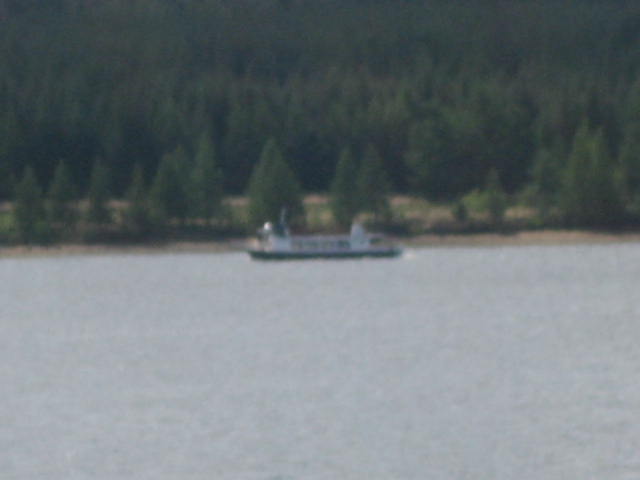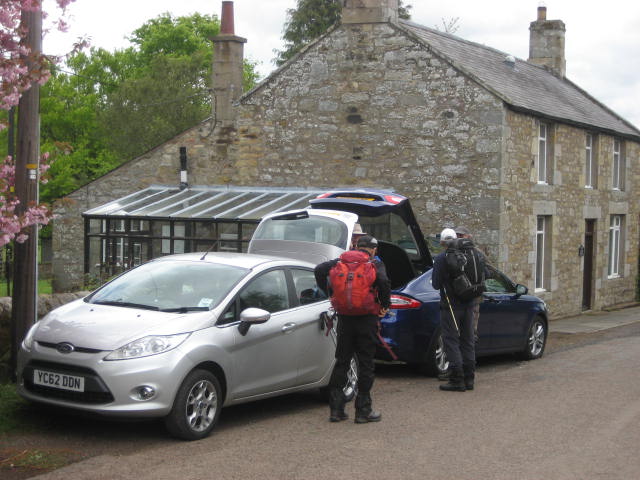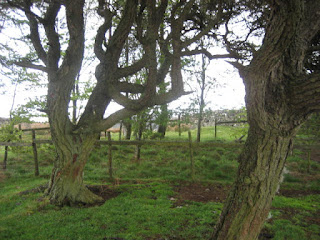While I was watching the Test Match*......May 27th (North Pennines)
The second Test match, England versus Sri Lanka started on May 27th at Chester le Street in County Durham and as a fan I chose to attend rather than go out with the gadgies. John Hall kindly sent some details of the walk and photographs, and here they are.
The walk started at Hartside Café, Hartside Cross, in Cumberland. To get there from Newcastle take the A69 west and near Haydon Bridge turn onto the A686 which goes south west through Alston before it begins the long climb to Hartside. It is a long climb, I've cycled up it, many years ago. It is also quite a spectacular drive through moorland country. The view from Hartside café, where you can park is one of the joys of northern England, looking out over the Eden Valley to the Lake District and Galloway.
The walk starts here, a map would be useful and the one to use is OS OL 31 North Pennines.
The walk. The team headed down a track near the café which is posted C2C (Coast to Coast cycle route), crossing the A686 and continuing on a track to Selah Bridge and on the road to Haresceugh, passing the ruins of the castle.. On a footpath heading north the team walked through the very aptly named Flowering Wood.
Tales from the Flowering Woods.
Once out of the wood the walk continued across Raven Beck to Outhwaite and then by means of paths across Renwick Fell To the trig point on Thack Moor.
Renwick Beck, could be a place for John C.'s plastic bags
Views on Renwick Fell
Herbie spot on Thack Moor. Half naked Ben and a Trig Point
Lunch over the team headed east to Watch Hill and examined some strange stones. I expect Dave had a field day!
John has found that the Lowthians were maltsters in nearby Renwick. A noble trade. Later one was foreman of the Manor Court Jury.
From Watch Hill the footpath goes south east to a second Trig point on Black Fell and then heads south back to the café by way of Hartside Height.
Two views covering most of the walk. (And a car park)
On the way home the lads called in at the Elks Head hotel and enjoyed some "Force Majeure" ale from Allendale Brewery.
Contains OS data copyright. Crown copyright and database right 2016.
I have roughed out this map from the information John gave me, it might not be too accurate.
The actual route. Pleased with my guess work. The lads missed out the castle ruins at Haresceugh
* For those not familiar with our national summer sport:
Cricket is a game played on a large field between two teams of eleven men or women, each has at least one innings.
My parents, Yorkshire folk for whom cricket is obligatory had a tea towel with the rules printed on it.
There are two teams, one in and one out.
The out team goes onto the field. The in team sits in the pavilion and eats sandwiches.
The in team send two players out to the wicket. The out team bowl at them and the in batters try to score runs by hitting the ball.
Runs can be scored by running up and down the wicket or hitting the ball across the boundary to save your legs.
They can be out in several ways; bowled, LBW (crickets version of soccer's offside rule and understood by some women), caught, stumped, run out, hit wicket, obstructing the field and allowing your hat or helmet to fall on the wicket.
If you are out another man comes in. When ten men are out the other side goes in and tries to score runs too, without getting too many men out. The winners are the ones with most runs.
The highest form of the game is a Test match which can last five days and still end in a draw, but very rarely a tie.
It is a simple game. It must be, the Australians play it, and they play very well too. It is not soft, a top class bowler delivers the ball at a speed approaching 100mph (160 kmph) and the wicket is roughly 20 metres long.(The wicket is the strip of grass the game is played on and also the three sticks (stumps) inserted at each end.
The test match at Chester le Street.
The second Test match, England versus Sri Lanka started on May 27th at Chester le Street in County Durham and as a fan I chose to attend rather than go out with the gadgies. John Hall kindly sent some details of the walk and photographs, and here they are.
The walk started at Hartside Café, Hartside Cross, in Cumberland. To get there from Newcastle take the A69 west and near Haydon Bridge turn onto the A686 which goes south west through Alston before it begins the long climb to Hartside. It is a long climb, I've cycled up it, many years ago. It is also quite a spectacular drive through moorland country. The view from Hartside café, where you can park is one of the joys of northern England, looking out over the Eden Valley to the Lake District and Galloway.
The walk starts here, a map would be useful and the one to use is OS OL 31 North Pennines.
The walk. The team headed down a track near the café which is posted C2C (Coast to Coast cycle route), crossing the A686 and continuing on a track to Selah Bridge and on the road to Haresceugh, passing the ruins of the castle.. On a footpath heading north the team walked through the very aptly named Flowering Wood.
Tales from the Flowering Woods.
Once out of the wood the walk continued across Raven Beck to Outhwaite and then by means of paths across Renwick Fell To the trig point on Thack Moor.
Renwick Beck, could be a place for John C.'s plastic bags
Views on Renwick Fell
Herbie spot on Thack Moor. Half naked Ben and a Trig Point
Lunch over the team headed east to Watch Hill and examined some strange stones. I expect Dave had a field day!
John has found that the Lowthians were maltsters in nearby Renwick. A noble trade. Later one was foreman of the Manor Court Jury.
From Watch Hill the footpath goes south east to a second Trig point on Black Fell and then heads south back to the café by way of Hartside Height.
Two views covering most of the walk. (And a car park)
On the way home the lads called in at the Elks Head hotel and enjoyed some "Force Majeure" ale from Allendale Brewery.
I have roughed out this map from the information John gave me, it might not be too accurate.
The actual route. Pleased with my guess work. The lads missed out the castle ruins at Haresceugh
* For those not familiar with our national summer sport:
Cricket is a game played on a large field between two teams of eleven men or women, each has at least one innings.
My parents, Yorkshire folk for whom cricket is obligatory had a tea towel with the rules printed on it.
There are two teams, one in and one out.
The out team goes onto the field. The in team sits in the pavilion and eats sandwiches.
The in team send two players out to the wicket. The out team bowl at them and the in batters try to score runs by hitting the ball.
Runs can be scored by running up and down the wicket or hitting the ball across the boundary to save your legs.
They can be out in several ways; bowled, LBW (crickets version of soccer's offside rule and understood by some women), caught, stumped, run out, hit wicket, obstructing the field and allowing your hat or helmet to fall on the wicket.
If you are out another man comes in. When ten men are out the other side goes in and tries to score runs too, without getting too many men out. The winners are the ones with most runs.
The highest form of the game is a Test match which can last five days and still end in a draw, but very rarely a tie.
It is a simple game. It must be, the Australians play it, and they play very well too. It is not soft, a top class bowler delivers the ball at a speed approaching 100mph (160 kmph) and the wicket is roughly 20 metres long.(The wicket is the strip of grass the game is played on and also the three sticks (stumps) inserted at each end.































































